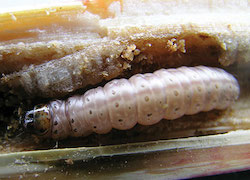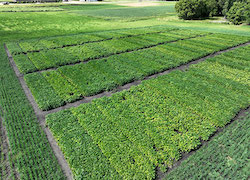| |
| |
 |
 |
| |
 |
|
@{mv_date_MMM d, yyyy}@ |
|
| |
 The new Carbine insecticide primarily targets aphids, and also reduces the number of lygus and tarnished plant bugs.
» Read more...
The new Carbine insecticide primarily targets aphids, and also reduces the number of lygus and tarnished plant bugs.
» Read more...
The strategy aims to help Canada’s ag sector recover more quickly from extreme events and contribute to world food security while contributing to efforts to cut emissions.
» Read more...
Canadian combine sales are up significantly in the month of November, and are showing growth in an otherwise tepid equipment market.
» Read more...
|
| |
 |
 |
| |
|
| |

With fertilizer prices top of mind, how can producers make the most of their fertilizer applications? At the 2023 Top Crop Summit, soil fertility specialists Dr. Jeff Schoenau and Dr. Don Flaten will address getting the best bang for your buck when it comes to nitrogen and phosphate fertilizer.
» Register today |
| |
|
| |
 Corn is certainly more commonly grown in Quebec and southern Ontario than in Western Canada. But it’s still a constant, particularly in Manitoba, which grows a little over six per cent of the country’s grain corn. Corn is the province’s sixth largest crop. Research is keeping up as well. This feature dives deep into the best agronomic advice for corn growers in the West, from row spacing to nitrogen application and everything in between.
» Learn more...
Corn is certainly more commonly grown in Quebec and southern Ontario than in Western Canada. But it’s still a constant, particularly in Manitoba, which grows a little over six per cent of the country’s grain corn. Corn is the province’s sixth largest crop. Research is keeping up as well. This feature dives deep into the best agronomic advice for corn growers in the West, from row spacing to nitrogen application and everything in between.
» Learn more... |
| |
 Dry bean growers typically rely on supplemental nitrogen to maximize yields. Unlike other grain legumes like soybeans, peas and fababeans that can produce more than half of their N requirements through N fixation, dry beans are known to be poor N fixers. However, with the adoption of new genetics, improve rhizobia strains and a longer field history of dry bean production, it is time to revisit N management recommendations developed more than 20 years ago.
» Learn more...
Dry bean growers typically rely on supplemental nitrogen to maximize yields. Unlike other grain legumes like soybeans, peas and fababeans that can produce more than half of their N requirements through N fixation, dry beans are known to be poor N fixers. However, with the adoption of new genetics, improve rhizobia strains and a longer field history of dry bean production, it is time to revisit N management recommendations developed more than 20 years ago.
» Learn more... |
| |
|
| |
|
|
| |
| | |








